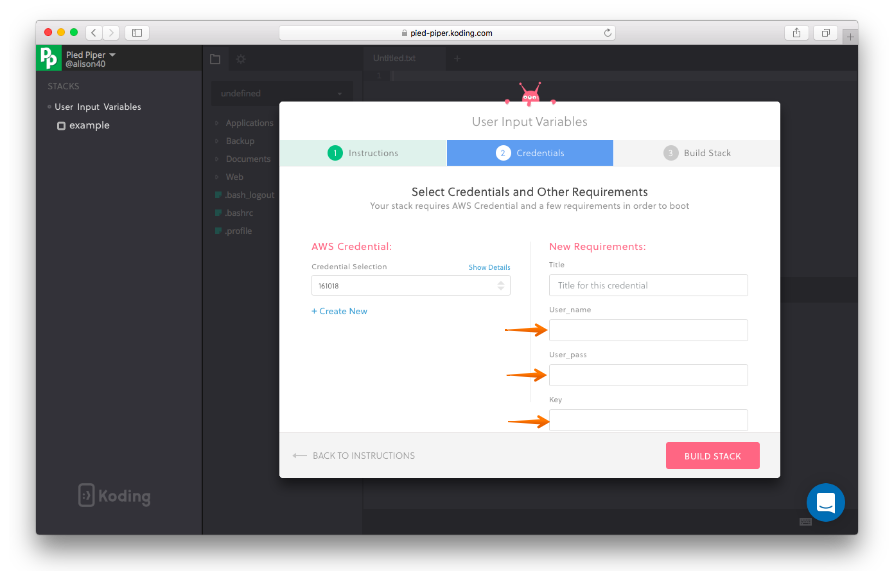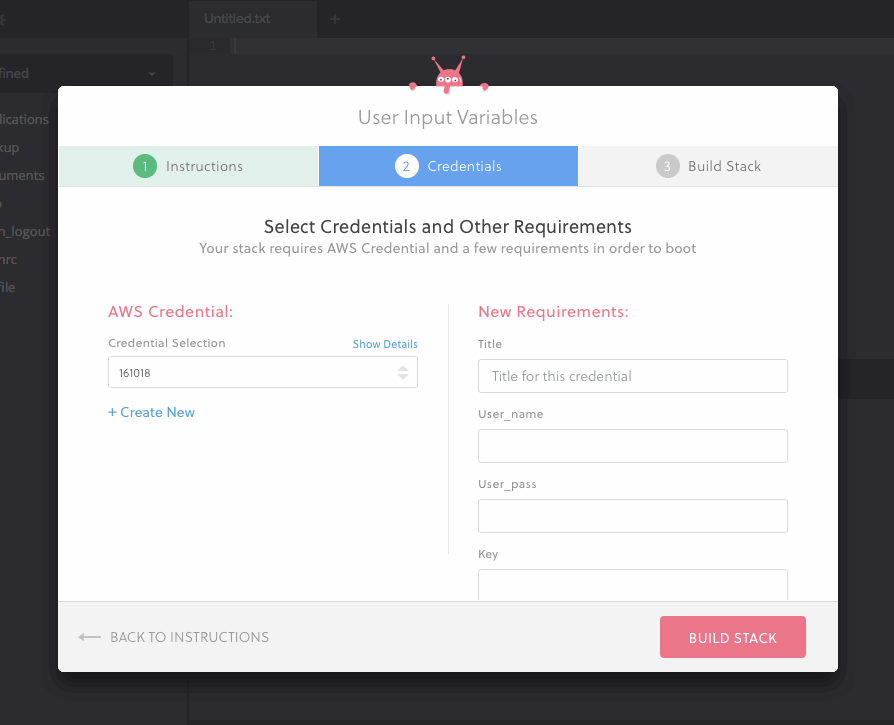User Input
You can ask the user to add inputs through the GUI before a stack is built and use their values in your stack.
By simply referring to a variable, Koding will automatically understand that you need a user input and will prompt your developers for input. Your variable needs to be preceded by ${var.userInput_
example: ${var.userInput_variable}
So if you want to ask a developer for their github username, you can use ${var.userInput_github_username}. This will prompt your developers for input with a field labeled as your variable name “github_username”
Stack Example
koding:
userInput:
user_name: text
user_pass: password
key: textarea
provider:
aws:
access_key: '${var.aws_access_key}'
secret_key: '${var.aws_secret_key}'
resource:
aws_instance:
example:
instance_type: t2.nano
user_data: |-
echo "${var.userInput_user_name}"
echo "${var.userInput_user_pass}"
echo "${var.userInput_key}"
In the above example we are asking our developers to enter three values user_name, user_pass, & key. These are defined under the user_data section in our example, but you can use user input variables in any area in your stack template. Once a developer builds this stack, they will be prompted with a GUI box asking to enter the values for the above three variables as seen below.

You can define each variable’s field type (text, textarea, password…etc) as we did in the beginning of our stack. You will notice that the input boxes size and behavior changes according to the field

In our example when the stack is built, we are only displaying the values the user entered. However you can see a more practical example in our GitHub guide.
Congratulations, you can now make use of user inputs in your Stack template.